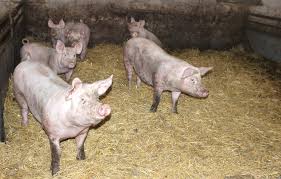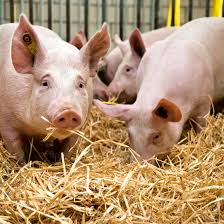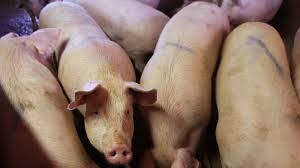Pigs are considered intelligent, normally gentle animals that appeal to many people as pets, while also being highly productive meat producers and one of the most popular farmed species throughout the world.
The three prerequisites for successful pig ownership are: keeping pigs well-fed on a balanced diet, providing shelter from the weather, and paying attention to their health and welfare.
Good Nutrition in Pig Fattening
Good nutrition is fundamental to a pig’s growth rate, reproductive success, health, and longevity. Pigs are opportunistic omnivores that have evolved to eat a wide range of feeds.
They are classed as monogastric animals, which means they have one stomach compartment – this is compared to ruminant animals that have four stomach compartments. Pigs digest feed very similarly to humans, with limited ability to extract nutrients from high-fiber feeds such as pasture.
Read Also: Bedbugs: Description, Damages Caused, Control and Preventive Measures
Protein-Rich Feed for Pigs

The feed mixture should be high in protein. Examples of feed high in protein include:
- Oilcake
- Fish Meal
- Purchased Concentrates (buy 18% protein formulation)
These protein-rich feeds should be mixed with rice bran, vegetables, and kitchen scraps to create a rich, balanced feed.
Read Also: 10 Medicinal Health Benefits Of Jakhya (Cleoma viscosa)
Feeding Practices and Clean Water for Pigs

1. Keep the feed trough clean, removing dirt and old feed before giving new feed.
2. Pigs must be provided at all times with an adequate daily supply of drinking water that is palatable, not harmful to their health, and at a temperature that does not inhibit drinking. This is usually about 8 to 15 liters per day.
3. Feed the pigs twice a day with fresh, clean feed, making sure it is not moldy. Corn is their most common food, but pigs can also benefit from a diet that includes protein from soybeans or cooked meat. They grow faster with vitamins and other supplements.
Ensuring Equal Feeding in Group-Housed Pigs
Pigs can be competitive for food when group-housed, and because concentrated feed can be eaten quickly, it is important that they are all given equal opportunity to eat their fair share. Compound feeds should be formulated by a nutritionist who understands the specific nutritional requirements of pigs to ensure a balanced diet that supports health and productivity.
Do you have any questions, suggestions, or contributions? If so, please feel free to use the comment box below to share your thoughts. We also encourage you to kindly share this information with others who might benefit from it. Since we can’t reach everyone at once, we truly appreciate your help in spreading the word. Thank you so much for your support and for sharing!
Frequently Asked Questions
We will update this section soon.

